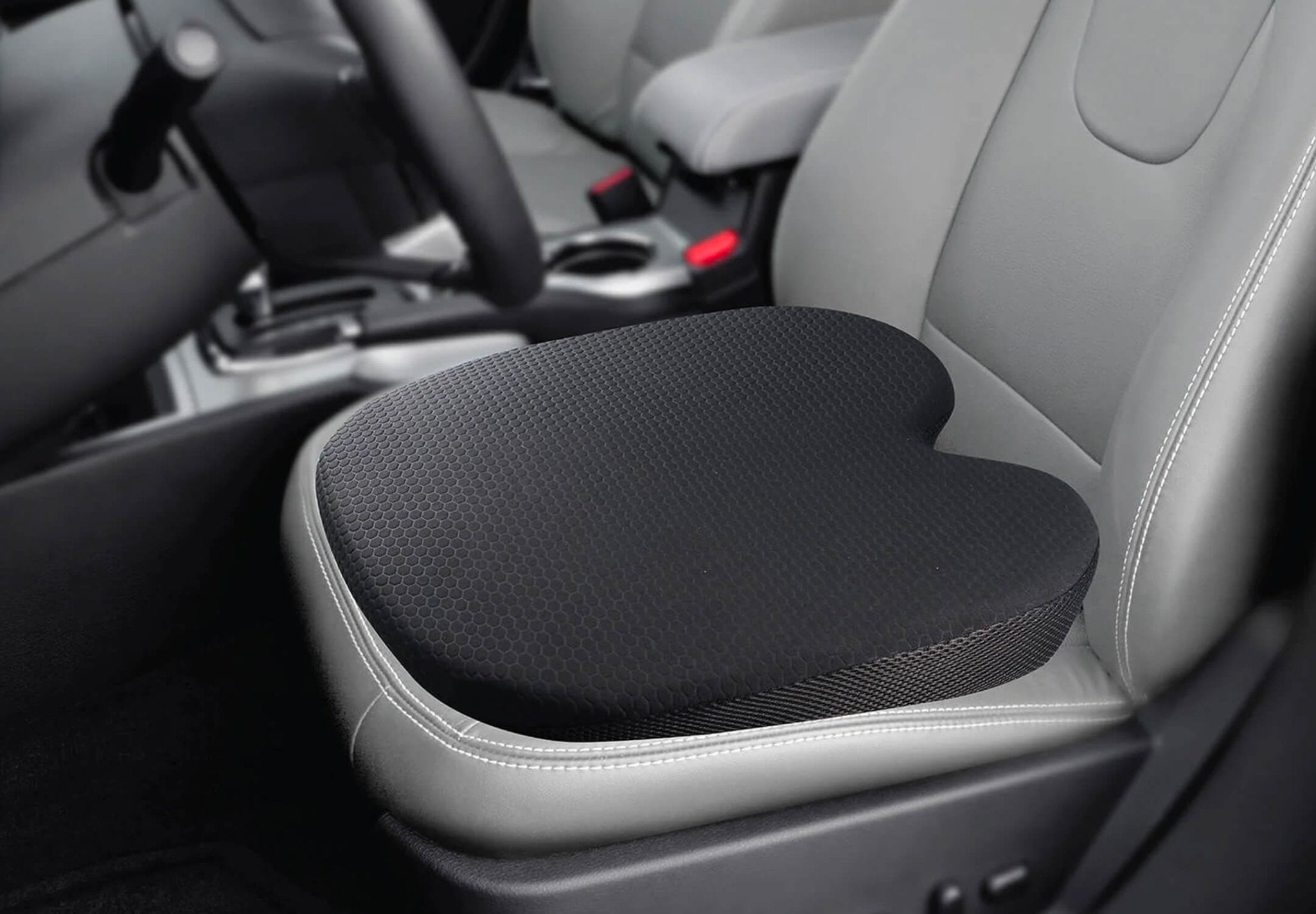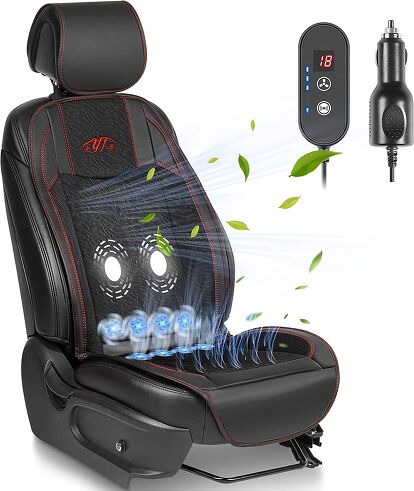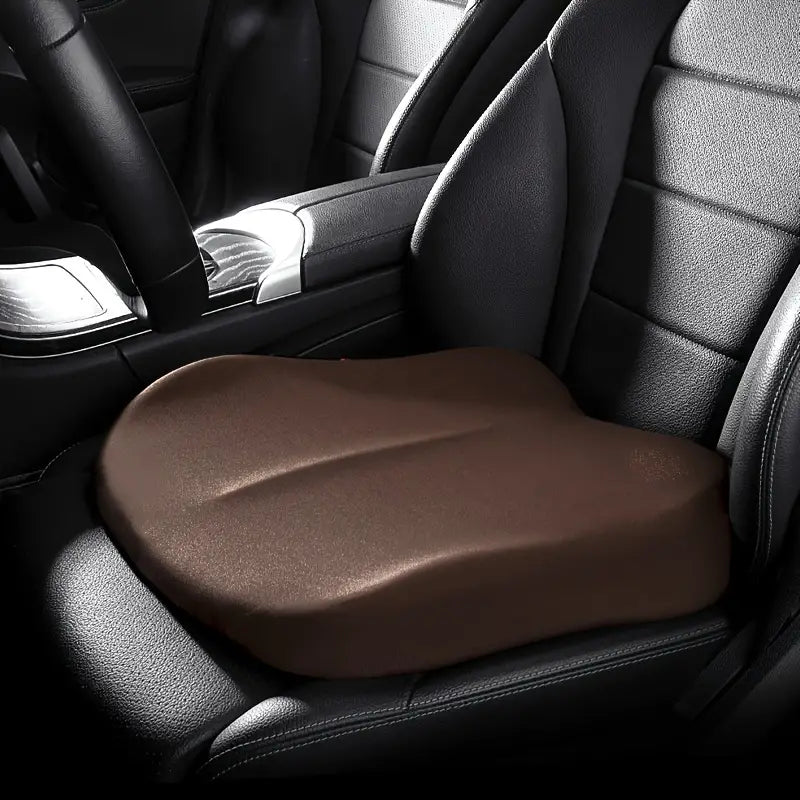Vibration Mitigation Using Car Seat Cushions An Overview
As our society becomes increasingly car-dependent, more and more people are spending countless hours sitting in their vehicles each day. This can lead to a variety of health problems, including back pain, neck pain, and fatigue. One of the main causes of these issues is vibration. The continuous shaking and jolting from the engine and road can take a toll on our bodies, resulting in discomfort and potential long-term health concerns. However, with the use of seat cushions specifically designed to reduce vibration, this problem can be effectively addressed.
In this article, we will delve into the world of seat cushions for vibration reduction in cars. We will explore the effectiveness of these cushions, the different types available, the materials and technologies used, ergonomic considerations, comfort and safety implications, testing and evaluation methods, future trends in development, and even applications beyond automotive seating. So buckle up and let’s get started!
The Efficacy of Seat Cushions in Reducing Vehicle Vibrations

Before we dive into the specifics of seat cushion design, it's important to understand the science behind vibration reduction. Vibration is a type of mechanical energy that is transmitted through the body. When we sit in a car, the vibrations from the engine and the road travel through the seat and into our bodies. This can cause our muscles to tense up and our spine to compress, leading to discomfort and potential health concerns.
Seat cushions address this issue by absorbing and dissipating these vibrations, reducing their impact on our bodies. But how effective are they? Studies have shown that seat cushions can significantly reduce the transmission of vibrations to the user, resulting in improved comfort and reduced risk of injury.
One study conducted by the University of Michigan found that seat cushions made of viscoelastic foam (commonly known as memory foam) reduced whole-body vibration by 14-33% in vehicle seats. Another study by the National Highway Traffic Safety Administration found that seat cushions made of air-filled cells reduced transmitted vibration by 30-50%. These findings highlight the efficacy of seat cushions in reducing vehicle vibrations and ultimately improving user comfort and safety.
Seat Cushion Design for Enhanced Vibration Absorption in Automobiles

Now that we’ve established the effectiveness of seat cushions in reducing vibrations, let’s delve into the design principles that make them so useful. When it comes to reducing vibration in vehicles, there are two main approaches – passive and active. Passive systems rely on the inherent properties of the materials used, while active systems use additional mechanisms and technologies to actively reduce vibrations.
Passive Seat Cushions
The majority of seat cushions on the market today fall under the passive category. These cushions rely on the materials they are made of to absorb and dissipate vibrations. The most commonly used materials are memory foam, gel, and air.
Memory foam is a type of viscoelastic material that is known for its ability to conform to the shape of an object when pressure is applied and then return to its original form when the pressure is released. This property makes it ideal for creating seat cushions that can mold to the shape of the user's body, providing support and reducing vibration.
Gel cushions contain a layer of gel sandwiched between two layers of foam. This gel layer works to absorb and dissipate vibrations while the foam layers provide support for the user. Air cushions, as the name suggests, are filled with air pockets that help to cushion and absorb vibrations. These pockets can be manually adjusted to find the perfect level of support and vibration reduction for the user.
Active Seat Cushions
Active seat cushions incorporate additional mechanisms to actively reduce vibrations. These mechanisms can include electronic vibration sensors, actuators, and control systems. These components work together to detect the vibrations and counteract them in real-time, resulting in even greater vibration reduction.
While active seat cushions may be more effective in vibration reduction, they also tend to be more expensive and require a power source. Therefore, they are not as commonly used as passive systems.
Materials and Technologies for Effective Vibration Isolation in Seat Cushions

The key to an effective seat cushion is the material used. As mentioned earlier, memory foam, gel, and air are the most commonly used materials. However, other innovative materials and technologies are continually being developed to improve the effectiveness of seat cushions in reducing vibrations.
One such technology is the use of advanced polymers, specifically viscoelastic polymers, in seat cushion design. These materials have been engineered to have superior damping properties, making them highly efficient in absorbing and dissipating vibrations. They also offer better durability and can withstand extreme temperatures, making them ideal for automotive applications.
Another technology that has gained popularity in recent years is the use of magnetorheological (MR) fluids in seat cushions. MR fluids are smart materials that change their viscosity when exposed to a magnetic field. This makes them perfect for use in suspension systems and, more relevant to our discussion, seat cushions.
When an MR fluid is combined with foam or other cushioning materials, it creates a hybrid material that has both elastic and viscous properties. This means that the material can adapt to different levels of vibration and adjust accordingly, providing the user with optimal support and vibration reduction.
Ergonomic Considerations in the Design of Vibration-Reducing Seat Cushions

One critical aspect of seat cushion design is ergonomics. Ergonomics is the study of the relationship between humans and their environment, with a focus on optimizing human performance and well-being. In the context of seat cushions, this means designing cushions that not only reduce vibrations but also provide proper support and promote good posture.
A seat cushion that is too soft or too firm can lead to discomfort and potential health issues. Therefore, it is essential to consider factors such as the user's weight, height, and body shape when designing seat cushions. A cushion that works for one person may not be suitable for another.
Moreover, proper ergonomics in seat cushion design can also improve safety. When a cushion provides adequate support and stability, it can help prevent accidents caused by discomfort and fatigue, ultimately leading to a safer driving experience.
Comfort and Safety Implications of Vibration-Mitigation Seat Cushions

Being comfortable while driving is important not only for our overall well-being but also for our safety on the road. Discomfort and fatigue can lead to distractions, which can increase the risk of accidents. This is especially true for long-distance drivers who spend extended periods behind the wheel.
With the use of vibration-mitigating seat cushions, these risks can be significantly reduced. As discussed earlier, these cushions absorb and dissipate vibrations, reducing muscle tension and spinal compression, resulting in improved comfort and less fatigue. This, in turn, can lead to more focused and alert driving, making the roads safer for everyone.
Testing and Evaluation of Seat Cushions for Vibration Reduction

As with any product, testing and evaluation are essential in determining the effectiveness of seat cushions in reducing vibrations. There are several methods used to test the performance of these cushions, including laboratory measurements and field evaluations.
Laboratory measurements involve placing the cushion on a vibration platform and measuring the transmitted vibration levels at various frequencies. These tests can provide valuable data on the cushion's performance and its ability to reduce vibrations at different frequencies.
On the other hand, field evaluations involve installing the cushion in a vehicle and collecting data on the user's comfort and exposure to vibrations during regular driving conditions. These tests are crucial in understanding the real-life effectiveness of seat cushions in reducing vibrations and improving comfort.
Future Trends in Vibration-Control Seat Cushion Development

The automotive industry is continually evolving, and with it, the technology used in seat cushion design is also advancing. One of the main areas of development is in the use of smart materials, such as MR fluids, as discussed earlier. These materials offer superior damping properties and can adapt to different vibration levels, making them ideal for use in seat cushions.
Another trend is the integration of active and passive systems to create hybrid seat cushions that provide both support and real-time vibration reduction. This combination offers the best of both worlds and could potentially revolutionize the way we think about seat cushion design.
Moreover, with the rise of electric and autonomous vehicles, there is a growing focus on creating environmentally friendly seat cushions. This includes using sustainable materials and implementing energy-efficient technologies in their design. As our society becomes more environmentally conscious, we can expect to see more eco-friendly options in the market.
Applications of Vibration-Mitigation Seat Cushions Beyond Automotive Seating

While seat cushions for vibration reduction are primarily associated with automotive seating, they have applications beyond just cars. Any mode of transportation that involves sitting for extended periods can benefit from the use of these cushions. This includes trains, buses, airplanes, and even office chairs.
Furthermore, seat cushions can also be useful in non-transportation settings, such as in industrial machinery and equipment. Many industrial workers spend hours operating heavy machinery, which often produces high levels of vibration. Seat cushions designed for vibration reduction can help prevent discomfort and fatigue, improving worker productivity and safety.
Conclusion: The Importance of Seat Cushions for Vibration Reduction in Vehicles

In conclusion, the use of seat cushions specifically designed for vibration reduction can significantly improve comfort and safety in vehicles. With the increasing amount of time people spend commuting in their cars each day, it is essential to address the issue of vibration transmission through seat design.
Seat cushions made of various materials and incorporating advanced technologies offer an effective solution to this problem. From memory foam to MR fluids, there are plenty of options available on the market that can cater to different needs and preferences.
Ergonomic considerations, comfort and safety implications, testing and evaluation methods, and future trends in development all contribute to the overall importance of seat cushions for vibration reduction. Not only do they improve our driving experience, but they also play a crucial role in promoting safer roads and healthier lifestyles. So next time you're hitting the road, consider investing in a seat cushion for added comfort and protection against harmful vehicle vibrations.



